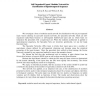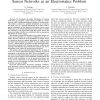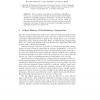79 search results - page 10 / 16 » Equivalent Number of Degrees of Freedom for Neural Networks |
ATVA
2004
Springer
14 years 24 days ago
2004
Springer
Timed Bisimulation Preserving Abstraction for Parametric Time-Interval Automata Akio Nakata, Tadaaki Tanimoto, Suguru Sasaki, Teruo Higashino Department of Information Networking, ...
CORR
2007
Springer
13 years 7 months ago
2007
Springer
Synchronization of relay nodes is an important and critical issue in exploiting cooperative diversity in wireless networks. In this paper, two asynchronous cooperative diversity s...
IDA
1998
Springer
13 years 7 months ago
1998
Springer
We investigate a form of modular neural network for classification with (a) pre-separated input vectors entering its specialist (expert) networks, (b) specialist networks which ar...
INFOCOM
2005
IEEE
14 years 29 days ago
2005
IEEE
— We investigate the spatial distribution of wireless nodes that can transport a given volume of traffic in a sensor network, while requiring the minimum number of wireless node...
ECAL
1995
Springer
13 years 11 months ago
1995
Springer
After an outline of the history of evolutionary algorithms, a new ( ) variant of the evolution strategies is introduced formally. Though not comprising all degrees of freedom, it i...



